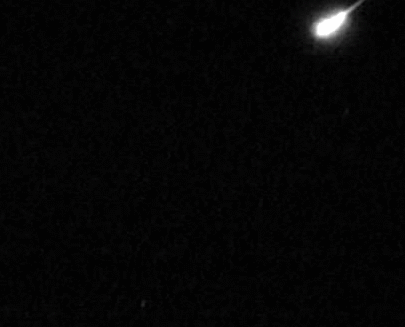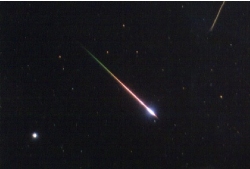
(photo courtesy of NASA)
Crestone
Weather Center
Crestone, Colorado

(photo courtesy of NASA)
Meteor Showers and Solar Eclipses


| Shower | Radiant/Direction* | Activity Period | Max Dates | # per hr* |
Moon (Peak Nite) |
Comet |
| Quadrantids (QUA) | Draco (NE) | Jan 1- Jan 17 | Jan 2- 3 | 20 to 80 | At % | 2003 EH |
| Lyrids (LYR) | 18 +33° | Apr 14- Apr 30 | Apr 22-23 | 10 to 20 | At 9% | Thatcher |
| Eta Aquarids (ETA) | 22:30 -1° | Apr 19- May 28 | May 5-6 | 10 to 30 | At 100% | Halley |
| Delta Aquarids (SDA) | 22:42 -16.3° | Jul 12- Aug 23 | Jul 30 | 17 to 25 | At 95% | 96P/Machholz |
| Perseids (PER) | 03:13 +58° | Jul 17- Aug 24 | Aug 12-13 | 60 - 90 | At 10% | Swift-Tuttle |
|
Draconid Orionids (ORI) |
Draco (N) 06:21 +15.6° |
Oct 7 -17 Sept 23- Nov 27 |
Oct.20-21 | 25+ 15 |
At 37% |
21P/Giacobini-Zinner Halley |
|
Southern Taurids (STA) Northern Taurids (NTA) |
03:35 +14.4° 03:55 +22.8° |
Sept
28 - Nov 20 |
Nov 4 - 5 Nov 11- 12 |
5 to 10 |
At 54% At 2% |
2P/Encke |
| Leonids (LEO) | 10:17 +21.6° | Nov 4- Dec 2 | Nov 17-18 | 10 to 20 | At 23% | Temple-Tuttle |
| Geminids (GEM) | 07:24 +32.3° | Dec 4- Dec 17 | Dec 13-14 | 60 to 120 | At 1% | 3200 Phaethon |
| Ursids (URS) | 14:36 +75.3° | Dec 14- Dec 25 | Dec 21-23 | 10 | At 74% | 8P/Tuttle |
| Quadrantids (QUA) | 15:20 +49.7° | Dec 26, 2023 - Jan 3, 2024 | Jan 3, 2024 | 20 to 80 | At 51% | 2003 EH |
*
Direction point from which meteors appear to originate in the sky/Number per hour
max is for a moonless rural sky
|
There are meteor showers taking place every day/night of the year, but
many are hard to see. The meteor showers listed above are the easiest to
observe and provide the most activity. All of these showers are best seen after
midnight. Some are not even visible until after midnight. Particular attention
should be noted to the moonlight conditions. Showers that peak with
the moon at half or more full will be affected by the moonlight and will be
difficult to observe. While the dates noted above for when each shower is best seen
- remains
close to the same dates year after year, while the moonlight conditions change considerably from
one year to the next. Crestone Current Weather Conditions |